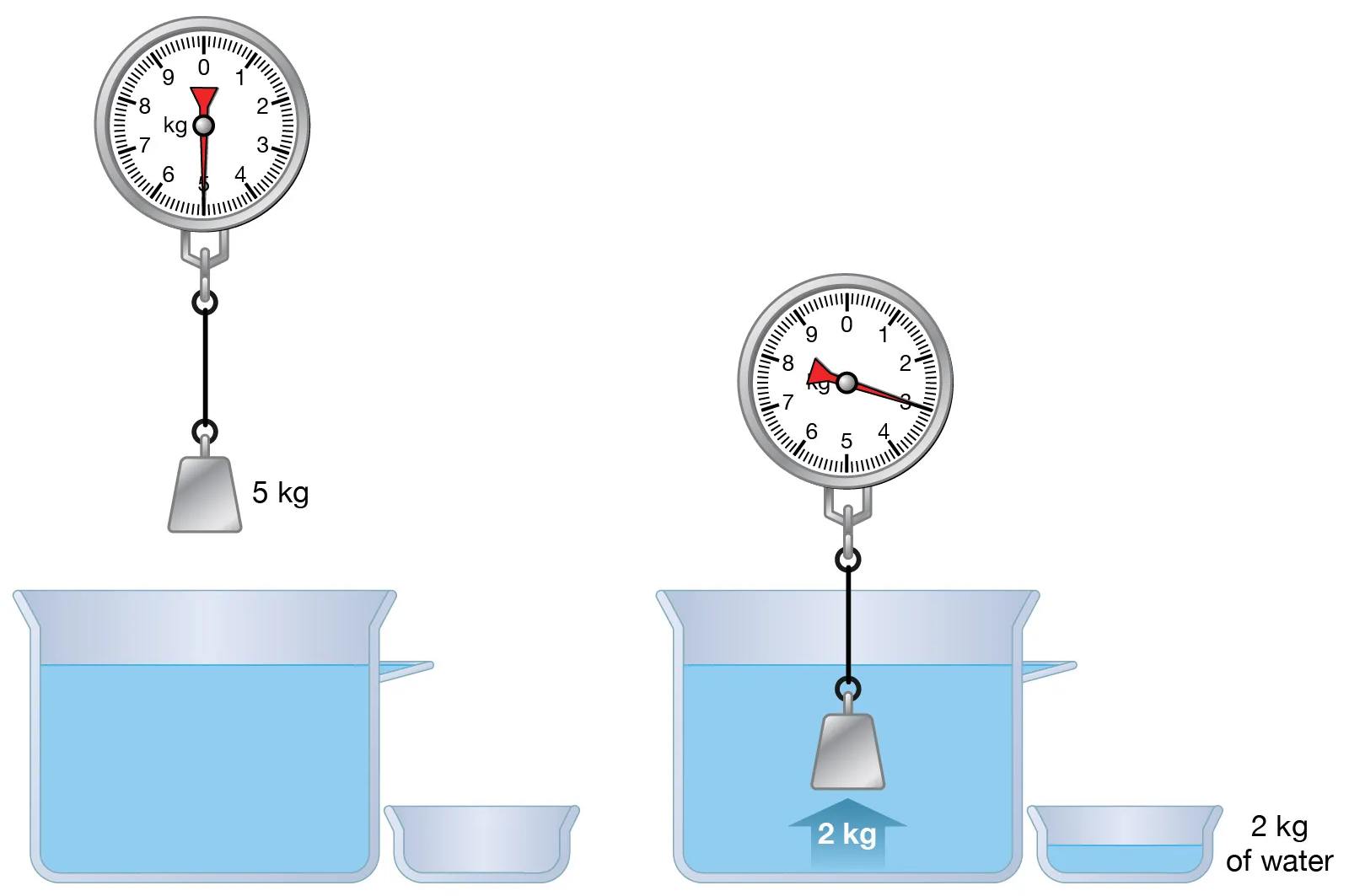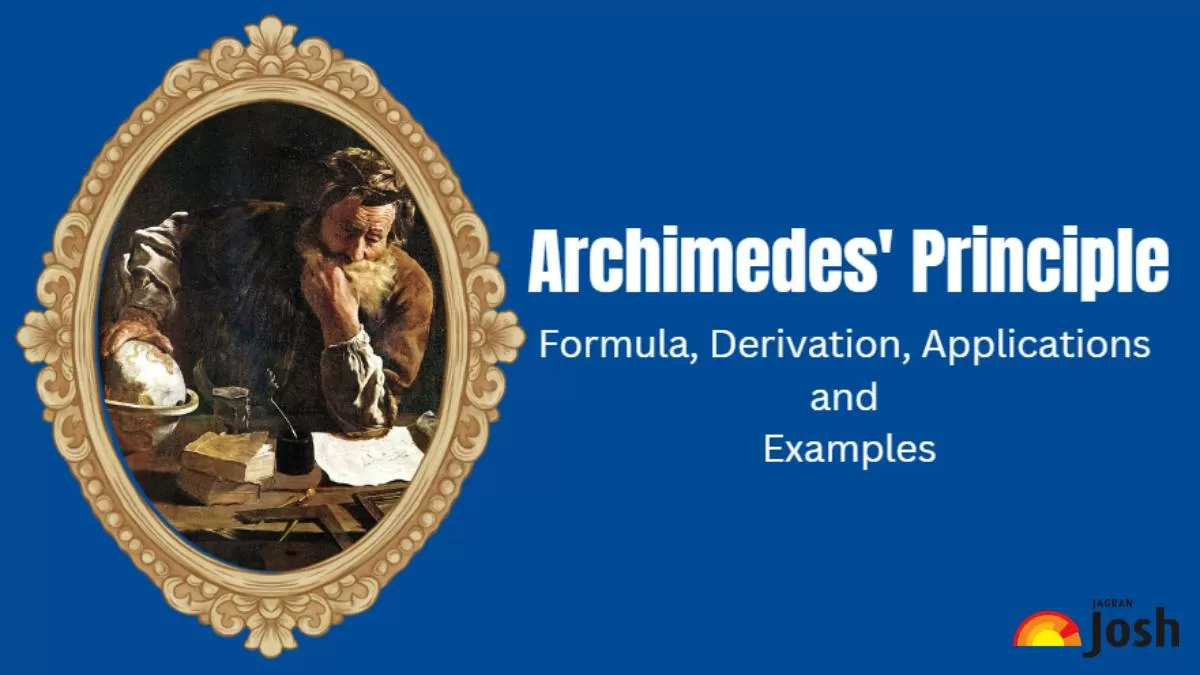Archimedes’ Principle in simple words: Archimedes' Principle is a fundamental law of physics that describes the buoyant force experienced by objects submerged in a fluid. Discovered by the ancient Greek mathematician and physicist Archimedes, this principle is essential in understanding how objects behave in liquids and gases. This article explains Archimedes' Principle, its formula, derivation, calculation examples, experiments, and applications.
What is Archimedes' Principle?
Archimedes' Principle states that any object, fully or partially submerged in a fluid, experiences an upward buoyant force equal to the weight of the fluid displaced by the object. This principle explains why objects float or sink and is crucial in various fields such as engineering, shipbuilding, and fluid mechanics.

Image Source: Britannica
Archimedes' Principle Formula
The mathematical expression of Archimedes' Principle is:
Fb=ρf⋅Vf⋅g
Where:
- Fb = Buoyant force
- ρf= Density of the fluid
- Vf= Volume of the fluid displaced
- g = Acceleration due to gravity
Archimedes' Principle Derivation
Density (ρ) = Mass (M)/Volume (V)
∴ the mass of the displaced liquid is:
Mass (M) = Density (ρ) x Volume (V)
To calculate the weight of the displaced liquid follow:
Weight = Mass x Acceleration due to gravity
Weight = Mass x g
Replace mass with density and volume
∴ Weight = ρ x V x g
From Archimedes’ principle, we know that the liquid displaced is equal to the weight of the object, therefore the thrust force or buoyant force is given as:
Buoyant force (Fb) = ρ x V x g
Related:
- Types of Waves in Physics
- Avogadro’s Number: Definition, Value, Meaning, Unit and Symbol
- Magnetic Field: Formula, Properties, and Applications
Archimedes' Principle Simple Calculations
Example 1: Floating Object
- Given: A wooden block with a volume of 0.5 m³ is floating on water (density of water, ρf=1000 kg/m3).
- Find: The buoyant force.
Fb=ρf⋅Vf⋅g
Fb=1000 kg/m3⋅0.5 m3⋅9.8 m/s2
Fb=4900N
The buoyant force acting on the wooden block is 4900 N.
Example 2: Sinking Object
- Given: A metal sphere with a volume of 0.1 m³ is submerged in water.
- Find: The buoyant force.
Fb=ρf⋅Vf⋅g
Fb=1000 kg/m3⋅0.1 m3⋅9.8 m/s2
Fb=980N
The buoyant force acting on the metal sphere is 980 N.
Archimedes' Principle Experiments
Experiment 1: Measuring Buoyant Force
- Materials: Spring scale, beaker, water, object (e.g., a block of wood).
- Procedure:
- Measure the weight of the object in air using the spring scale.
- Submerge the object in water and measure the weight again.
- The difference in weight gives the buoyant force.
Experiment 2: Density Determination
- Materials: Graduated cylinder, water, object.
- Procedure:
- Fill the graduated cylinder with water and note the initial volume.
- Submerge the object and note the new volume.
- The difference in volume is the volume of the fluid displaced.
- Use the buoyant force formula to calculate the density of the object.
Archimedes' Principle Applications
- Shipbuilding: Designing ships and submarines requires understanding buoyancy to ensure they float and maintain stability.
- Hydrometers: Devices used to measure the density of liquids based on buoyant force.
- Hot Air Balloons: Operate on the principle of buoyancy where the heated air inside the balloon is less dense than the surrounding air.
- Scuba Diving: Understanding buoyancy is crucial for divers to control their buoyancy underwater.
Archimedes' Principle is an essential part of fluid mechanics, providing information on why objects float or sink. Its applications are vast, ranging from everyday phenomena to complicated engineering projects. This explainer was designed to help students understand this principle and its basics to absorb deep concepts related to buoyancy.
References and Further Reading
- Books
NCERT Class 10 Science Textbook PDF
NCERT Class 12 Physics Textbook PDF
- Articles
Magnetic effects of Electric Current
- Online Resources
CBSE Class 10 Science Video Tutorials
CBSE Class 12 Physics Video Tutorials
Also Check:
